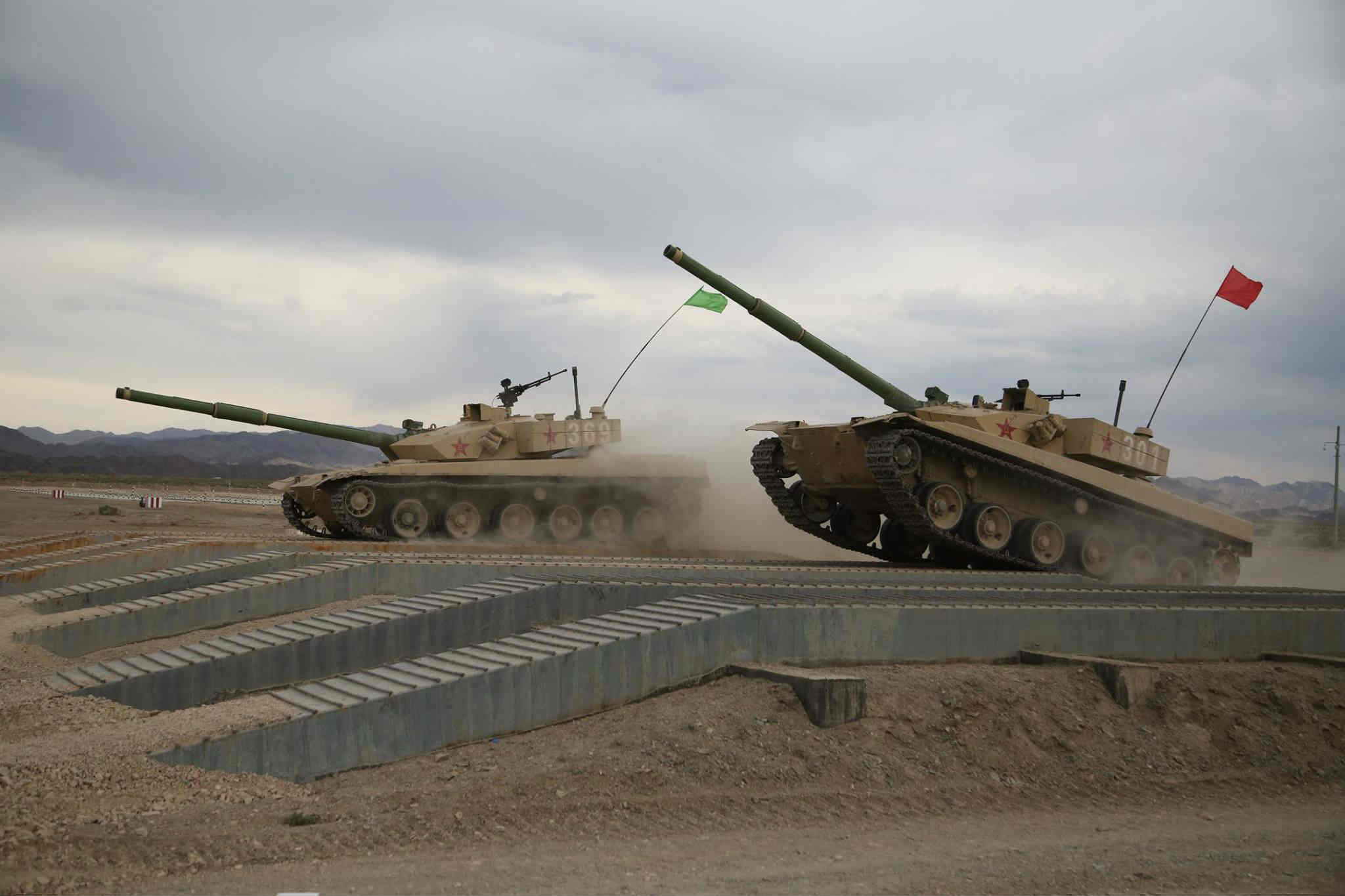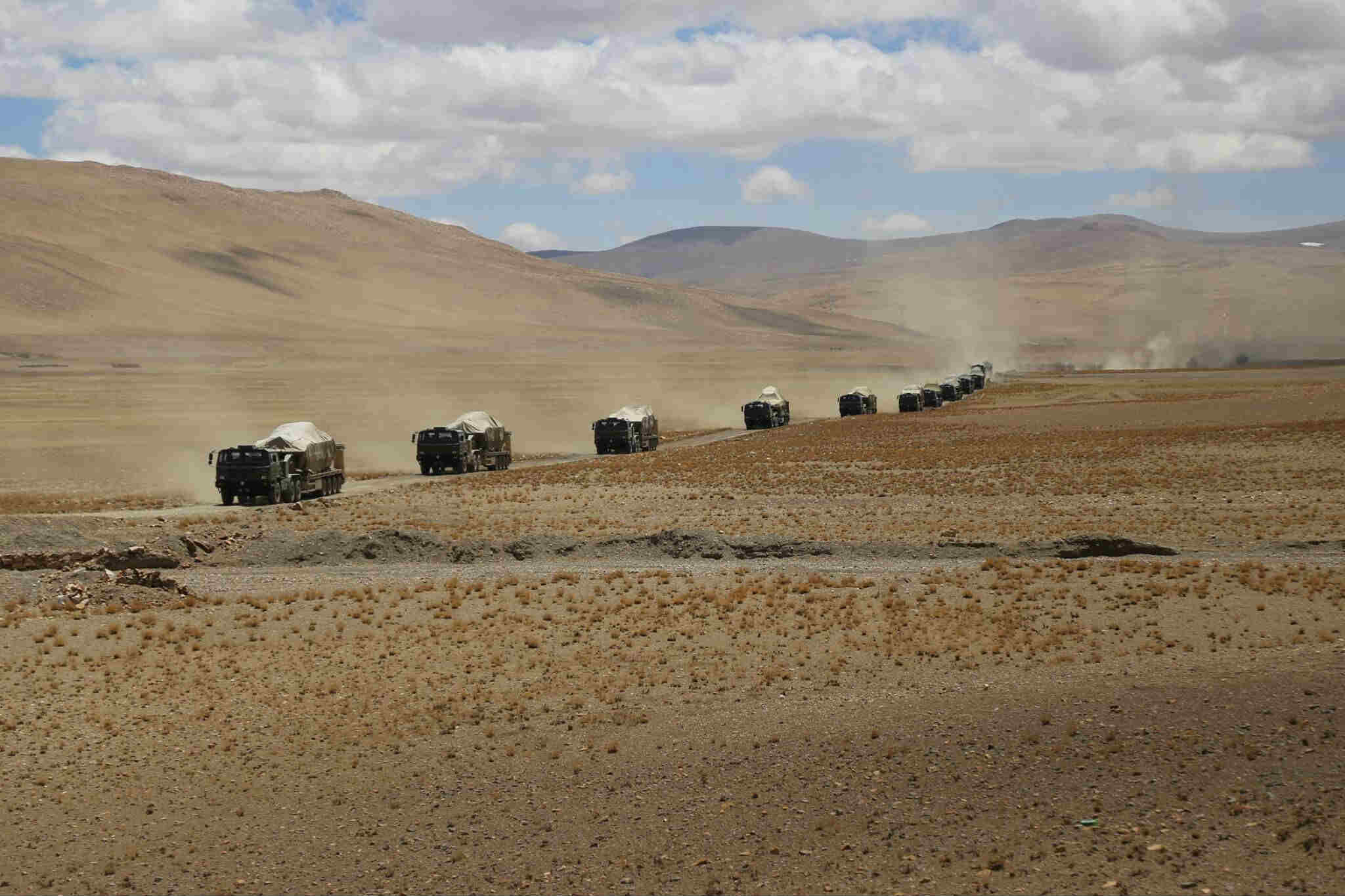


(File photo)
China has taken necessary and emergency measures in response to the Indian border troops crossing into the Chinese territory at the Sikkim section of the China-India boundary, Chinese Foreign Ministry Spokesperson Lu Kang told a press briefing on Tuesday. The Indian government has been informed of the matter through the diplomatic channel, Lu said.
“The Indian side should take necessary measures to alleviate the tension caused by their border troops' illegal entry, and create conditions for their pilgrims' travel to Xi Zang via the Nathu-la pass,” Lu told reporters on what could come next.

(File photo)
There is solid legal evidence to support the delimitation of the Sikkim section of the China-India boundary. It is stated in article one of the Convention Between Great Britain and China Relating to Sikkim and Tibet (1890) that "the boundary of Sikkim and Tibet shall be the crest of the mountain range separating the waters flowing into the Sikkim Teesta and its affluents from the waters flowing into the Tibetan Mochu and northwards into other rivers of Tibet. The line commences at Mount Gipmochi on the Bhutan frontier, and follows the above-mentioned water-parting to the point where it meets Nepal territory." It is without any doubt that the spot where the Indian border troops trespassed is on the Chinese side of the boundary. Both China and the successive Indian governments recognize that the Sikkim section has been delimited. It has been confirmed by the Indian leader, the relevant Indian government document and the Indian delegation at the special representatives' meeting with China on the boundary question that India and China share common view on the 1890 convention's stipulation on the boundary alignment at the Sikkim section. To observe the relevant convention and document is the inescapable international obligation of the Indian side.
 Fire brigade in Shanghai holds group wedding
Fire brigade in Shanghai holds group wedding Tourists enjoy ice sculptures in Datan Town, north China
Tourists enjoy ice sculptures in Datan Town, north China Sunset scenery of Dayan Pagoda in Xi'an
Sunset scenery of Dayan Pagoda in Xi'an Tourists have fun at scenic spot in Nanlong Town, NW China
Tourists have fun at scenic spot in Nanlong Town, NW China Harbin attracts tourists by making best use of ice in winter
Harbin attracts tourists by making best use of ice in winter In pics: FIS Alpine Ski Women's World Cup Slalom
In pics: FIS Alpine Ski Women's World Cup Slalom Black-necked cranes rest at reservoir in Lhunzhub County, Lhasa
Black-necked cranes rest at reservoir in Lhunzhub County, Lhasa China's FAST telescope will be available to foreign scientists in April
China's FAST telescope will be available to foreign scientists in April "She power" plays indispensable role in poverty alleviation
"She power" plays indispensable role in poverty alleviation Top 10 world news events of People's Daily in 2020
Top 10 world news events of People's Daily in 2020 Top 10 China news events of People's Daily in 2020
Top 10 China news events of People's Daily in 2020 Top 10 media buzzwords of 2020
Top 10 media buzzwords of 2020 Year-ender:10 major tourism stories of 2020
Year-ender:10 major tourism stories of 2020 No interference in Venezuelan issues
No interference in Venezuelan issues
 Biz prepares for trade spat
Biz prepares for trade spat
 Broadcasting Continent
Broadcasting Continent Australia wins Chinese CEOs as US loses
Australia wins Chinese CEOs as US loses